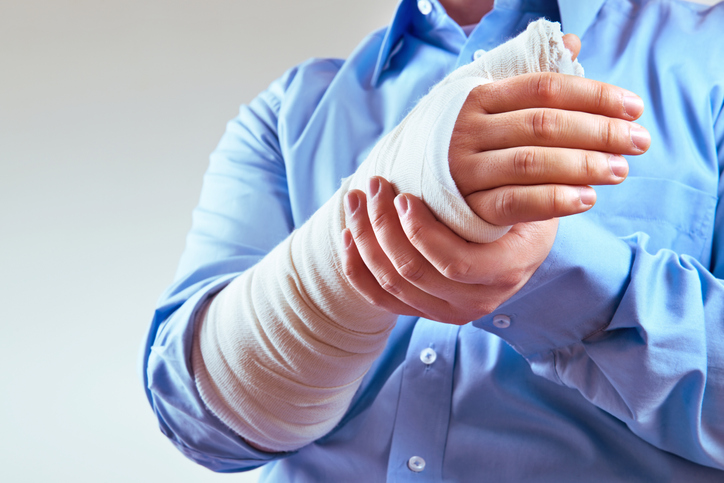Leading causes of broken bones in the workplace

Every year, fractures (broken bones) account for tens of thousands of work injuries across the United States, according to the Bureau of Labor Statistics. Certain fields such as construction are particularly at risk, but a fracture can occur at any time in any workplace, especially among older workers.
Employers are responsible for maintaining safe premises and protecting their workers from the risk of fractures. That’s why it’s so important to know the causes of broken bones:
- Falls: even a slip or trip and fall can result in a fracture, though the more dangerous falls are from ladders or other elevated surfaces. Employers need to maintain their workspace to prevent falls and provide personal protective equipment to limit the risk of serious injury.
- Struck by/against accidents: when a worker is hit by a falling object or slammed into a hard object with force, bones can experience significant trauma.
- Machinery accidents: some types of machinery can crush hands or feet that are caught in them, or twist a limb with such force that bones are broken.
- Work-related car accidents: depending on how the crash happens, a motor vehicle accident can break nearly any bone in the body. Workers may break their arms when bracing for impact or their legs when the cab of a vehicle crumples around them.
- Repetitive motion injuries: the vibration of certain power tools can cause stress fractures in the hands and wrists over time.
Other types of incidents, such as workplace violence, can also occasionally result in broken bones. Regardless of the cause, a fracture is a significant injury that requires immediate medical attention — and will have a significant effect on the worker’s ability to do their job.
The high cost of a fracture at work
Simple fractures can be treated with a cast or splint to hold the bone in place while it heals, but more serious breaks may require more invasive treatment. An orthopedic surgeon may have to operate on the broken bone to put it back together and insert metal screws or plates to hold it in place, with follow-up surgery required months or years later to take the hardware back out. Certain types of breaks may require traction, a process where weights are used to slowly realign the bones. Patients in traction may be bedridden for several weeks or more. Moreover, because broken bones have to be immobilized while they heal, physical therapy is often needed to regain the full range of motion and strength of an affected limb. During the recovery period, the injured worker may need to use assistive technologies such as crutches or a wheelchair to get around, depending on which bone is broken.
Depending on which bone is broken and the nature of the injured worker’s job, a broken bone may require weeks or months away from work. A worker who can perform some but not all of their responsibilities while a bone heals may have to take on a “light duty” role with less pay. Depending on the type of break, there may be permanent damage that will have long-term effects on the injured worker’s career.
An experienced workers’ compensation lawyer can protect your rights
Workers’ compensation pays for a percentage of your lost wages if you are unable to work due to an injury, plus the full cost of all reasonable and necessary medical treatment for the injury — surgery, pain medication, medical devices, physical therapy, and so on. If you are able to return to work on “light duty” with fewer hours or less pay, workers’ comp likewise pays a percentage of the difference between your new wage and your pre-injury wage. However, navigating the system can be a complex and difficult process with potentially thousands of dollars at stake. You don’t have to deal with the workers’ compensation system alone. Contact the Law Offices of Deborah G. Kohl today for a free consultation.

